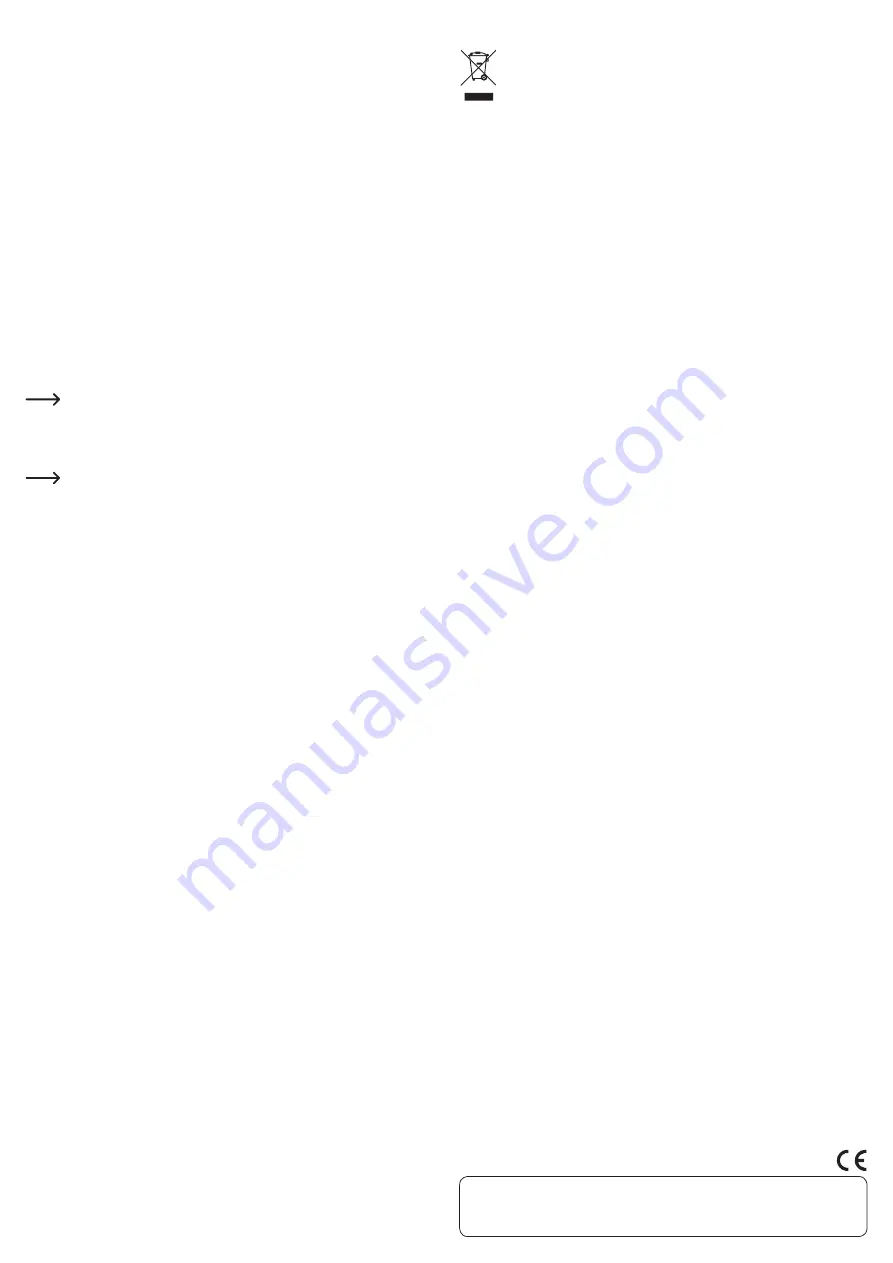
This is a publication by Conrad Electronic SE, Klaus-Conrad-Str. 1, D-92240 Hirschau (www.conrad.com).
All rights including translation reserved. Reproduction by any method, e.g. photocopy, microfilming, or the capture in electronic data
processing systems require the prior written approval by the editor. Reprinting, also in part, is prohibited. This publication represent the
technical status at the time of printing.
© Copyright 2015 by Conrad Electronic SE.
V2_0215_02_HK
Driver installation
• Your operating system has the drivers necessary for the hard drive casing, thus
there is no data storage device containing drivers included in delivery.
• When you first connect the hard drive casing with your built-in hard drive/SSD to a
USB port (see the chapter “Connection”), Windows
®
will recognize new hardware.
Wait until the installation has been completed. That should only take a few seconds.
Connection
• Do not move the product with your built-in hard drive during operation. If moved
during operation, the write/read heads inside the hard drive could touch the
magnetic disc. This may result not only in data loss but damage to the hard drive!
Also avoid moving the product for up to 30 seconds after disconnecting it from the
computer, until the hard drive’s magnetic discs come to a stop.
• Disregard this warning for use with an SSD, as an SSD contains no moving parts.
• Do not install the hard drive casing vertically, since a mounted hard drive could get
damaged if tipped over (especially if the hard drive is currently in use).
• Connect the USB 3.0 cable to the hard drive casing and the USB 3.0 port on your
computer. A standard USB 3.0 port supplies a current of max. 900 mA. This is
sufficient for the hard drive casing and a built-in hard drive (or SSD).
• In some cases, notebooks or non-standard USB 3.0 ports may supply less current. In
such cases, an appropriate USB 3.0 hub with a separate power supply is necessary
for operation.
According to USB standard, a USB 2.0 port can supply a current of up to
500 mA. The hard drive casing and a built-in hard drive require more current
than 500 mA, operation is not possible using this port.
Partitioning/formatting the hard drive/SSD
A new hard drive must be partitioned and formatted before the drive can be
recognized and used by, for instance, Windows
®
File Manager.
• Windows
®
8, 7, Vista
TM
or Windows
®
XP allow for easy partitioning and formatting
via control panel (and from there via computer management/disk management).
• After partitioning, the new partition must be formatted (quick formatting is sufficient;
performing “normal” formatting procedures could otherwise take very long to
complete, depending on the size of the hard drive/SSD).
• Only after the hard drive/SSD has been partitioned and subsequently formatted can
data be saved to the hard drive/SSD.
Operation
• Once the USB 3.0 port (2) is supplied with current, the hard drive/SSD starts running
and the blue LED (3) lights up.
• The red LED (4) lights up during data transfer.
• Disconnect the USB 3.0 cable from the computer and hard drive casing after all
LEDs have turned off and if the product is not going to be used any further.
• To protect the hard drive casing from dust, store it in the storage bag provided.
Maintenance and cleaning
• Disconnect the product from the power supply (USB port) before each cleaning.
• Besides occasional cleaning, the device is maintenance-free. To clean the device,
use a soft, anti-static and lint-free cloth. To prevent scratch marks, do not apply too
much force on the surface during cleaning.
• Do not use any abrasive or chemical cleaners.
• Never submerge the product in water.
Disposal
Electronic devices are recyclable waste and must not be disposed of in the
household waste.
At the end of its service life, dispose of the product according to the
relevant statutory regulations.
You thus fulfil your statutory obligations and contribute to the protection of
the environment.
Technical data
Operating voltage/current .................5 V/DC, max. 900 mA (via USB)
Interface/connection standard ........USB 3.0
Supported hard drives/SSD............... SATA, 6.35 cm/2.5”, of 5 mm / 7 mm / 9.5 mm in
height and of up to 2 TB in storage capacity
SATA support ....................................... SATA I / II / III (for SATA III, max. data transfer
rate is the same as for SATA II)
Supported operating systems ........... Windows
®
XP (Home, Pro, with SP1, SP2, SP3),
only 32 bit, Vista™ (32 / 64 bit), 7 (32 / 64 bit),
8.0 (32 / 64 bit), 8.1 (32 / 64 bit),
Mac OS X 10.1 and higher
Linux 2.6.31 and higher
Operating conditions .........................0 to +70 °C, 20 - 80 % RH
Storage conditions..............................-20 to +65 °C, 10 - 80 % RH
Dimensions (W x H x D)......................76 x 13 x 139 mm
Weight ...................................................approx. 90 g


























